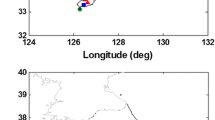Abstract
Stratospheric platform (SP) is a new technique for providing mobile and data communications and is capable to add many advantages to the users compared to conventional terrestrial and satellite systems. A very competing problem of this emerging system is the positional instability of SP which affects the system performance. In this paper, one main problem of SP positional instabilities—which is the rotation drift—is described and analyzed and its impact on the call handover in cellular systems is also investigated. The total handover due to both user mobility and platform positional instability is explained and determined. In addition, an expression for the number of handed calls is deduced which has been shown as function of user density, distribution, platform angular shift due to rotation, cell geometry, and number of active calling users. The analysis of this number shows the serious effects of the rotational motion instability on the system performance.









Similar content being viewed by others
References
Pavlidou, F. N., Ruggieri, M., Gerla, M., & Miura, R. (2006). Communications via high altitude platforms: Technologies and trials. International Journal of Wireless Information Networks, 13(1), 1–4.
Karapantazis, S., & Pavlidou, F. N. (2005). The role of high altitude platforms in beyond 3G networks. IEEE Wireless Communications Magazine, 12(6), 33–41.
Mohammed, A., Mehmood, A., Pavlidou, F. N., & Mohorcic, M. (2011). The role of high-altitude platforms (HAPs) in the wireless global connectivity. Proceedings of the IEEE, 99(11), 1939–1953.
Kim, J., Lee, D., Ahn, J., Ahn, D. S., & Ku, B. J. (2008). Is HAPS viable for the next-generation telecommunication platforms in Korea. EURASIP Journal on Wireless Communications and Networking. doi:10.1155/2008/596383
Thornton, J., Grace, D., Capstick, M. H., & Tozer, T. C. (2003). Optimizing an array of antennas for cellular coverage from a high altitude platform. IEEE Transactions on Wireless Communications, 2(3), 484–492.
Thornton, J. (2004). A low sidelobe asymmetric beam antenna for high altitude platform communications. IEEE Microwave and Wireless Components Letters, 14(2), 59–61.
Chen, G., Grace, D., & Tozer, T. C. (2005). Performance of multiple high altitude platforms using directive HAP and user antennas. Wireless Personal Communications, 32(3–4), 275–299.
Albagory, Y., & Abbas, A. E. (2013). Smart cell design for high altitude platforms communication. AEU-International Journal of Electronics and Communications, 67(9), 780–786.
Miura, R., & Suzuki, M. (2003). Preliminary flight test program on telecom and broadcasting using high altitude platform stations. Wireless Personal Communications, 24(2), 341–361.
Axiotis, D. I., Theologou, M. E., & Sykas, E. D. (2004). The effect of platform instability on the system level performance of HAPS UMTS. Communications Letters, IEEE, 8(2), 111–113.
Nofal, M., Hadhood, M., Dessouky, M., & Albagory, Y. (2002). A novel cellular structure for stratospheric platform mobile communications. In Radio Science Conference, 2002.(NRSC 2002). Proceedings of the Nineteenth National (pp. 354–362). IEEE.
Albagory, Y. (2014). An approach for designing flat-top high-altitude platforms ring-shaped cells using vertical linear array. Wireless Personal Communications, 77(1), 661–673.
Thornton, J. (2004). A low sidelobe asymmetric beam antenna for high altitude platform communications. IEEE Microwave and Wireless Components Letters, 14(2), 59–61.
Dessouky, M. I., Sharshar, H. A., & Albagory, Y. A. (2007). Geometrical analysis of high altitude platforms cellular footprint. Progress in Electromagnetics Research, 67, 263–274.
Acknowledgments
The authors would like to extend their sincere appreciation to the Deanship of Scientific Research at King Saud University for its funding of this research through Research Group Project RGP-VPP-229.
Author information
Authors and Affiliations
Corresponding author
Rights and permissions
About this article
Cite this article
Albagory, Y., Nofal, M. & Ghoneim, A. Handover Performance of Unstable-Yaw Stratospheric High-Altitude Stations. Wireless Pers Commun 84, 2651–2663 (2015). https://doi.org/10.1007/s11277-015-2758-7
Published:
Issue Date:
DOI: https://doi.org/10.1007/s11277-015-2758-7




